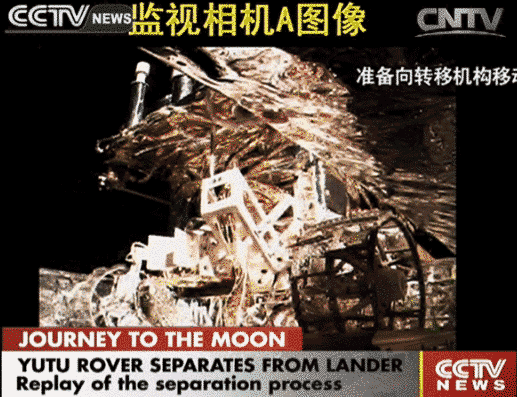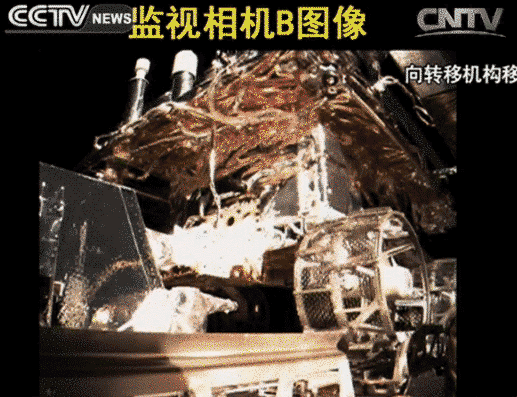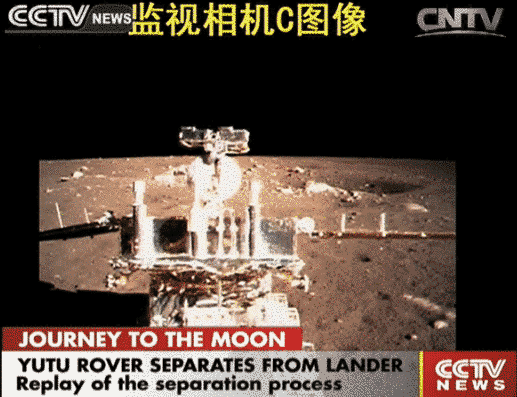How to install the app on iOS
Follow along with the video below to see how to install our site as a web app on your home screen.
Note: This feature may not be available in some browsers.
You are using an out of date browser. It may not display this or other websites correctly.
You should upgrade or use an alternative browser.
You should upgrade or use an alternative browser.
China Space Military:Recon, Satcom, Navi, ASAT/BMD, Orbital Vehicle, SLV, etc.
- Thread starter kvLin
- Start date
shuttler
ELITE MEMBER

- Joined
- Feb 21, 2012
- Messages
- 9,253
- Reaction score
- 3
- Country
- Location
So far, So Good!
Our FLAG is proudly displayed on the MOON!

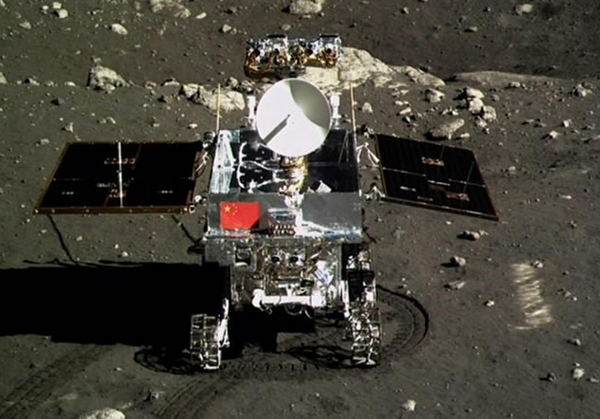
Yutu, China's first moon rover, is shown in this picture taken by lunar probe Chang'e 3's lander on Dec 15, 2013.[Photo / Xinhua]
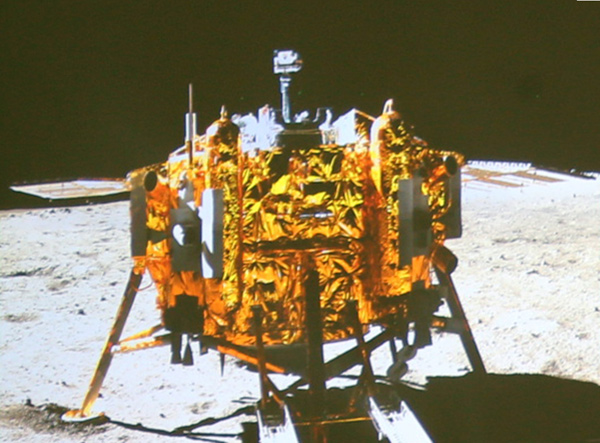
China's lunar probe Chang'e 3's lander is shown in this picture taken by the country's first moon rover, Yutu, on Dec 15, 2013.[Photo / Xinhua]
Yutu gets rolling on the moon
By Zhao Lei and Zhao Huanxin ( China Daily ) Updated: 2013-12-16 01:48:09
China's first lunar rover and the lander took pictures of each other near mid-night on Sunday, marking the complete success of the country's Chang'e-3 lunar probe mission.
President Xi Jinping and Premier Li Keqiang, who both came to the Beijing Aerospace Control Center late Sunday night to watch the photo-taking session, congratulated scientists for the success.
Ma Xingrui, chief commander of China's lunar program, announced lunar probe Chang'e-3 mission a "complete success", after the lander and moon rover took pictures of each other.
A national flag was shown pasted on the moon rover in a picture taken by the lander. Aerospace experts said the flag, plus another one on the lander, could sustain extreme weather conditions.
It was the first time China's national flag had appeared on a celestial body.
Yutu , which has a designed life span of three months, will also conduct geographic surveys, said Sun Huixian, deputy chief engineer of China's lunar exploration program.
In ancient Chinese mythology, Yutu is the white pet rabbit of the lunar goddess Chang'e.
The rover will analyze major elements on the lunar surface and study energy and mineral resources along its route. A radar system attached to the bottom of the rover can probe up to 100 meters beneath the lunar surface, he said.
Sun Zezhou, chief designer of the Chang'e-3 probe, said Yutu is able to climb slopes of up to 30 degrees and travel at 200 meters per hour, explaining that designers set a low speed for the vehicle because it has to detect and avoid obstacles.
Theoretically, Yutu can travel nearly 10 kilometers on the moon, Sun said, noting that engineers had set up a laboratory on Earth to simulate the rigorous environment on the moon and the rover has passed numerous tests.
Using its ability to detect obstacles, the rover will determine a path of least resistance by coupling onboard navigation systems with remote control.
The moon's wide temperature range — from more than 100 C during day to as low as -180 C at night — presents another challenge to the rover.
To work properly, the rover has to maintain an internal operating temperature range of -40 to 50 C, so both the lander and rover are equipped with radioisotope heater units.
The Chang'e-3's lander will deploy a telescope to observe stars, the galaxy and the universe from the moon, according to Sun.
"This is the first time humankind has placed a telescope on the moon. The special environment on the moon will enable us to conduct observation that could not be done on Earth due to the impact of the atmosphere," he said.
In addition, the lander also carried an extreme-ultraviolet imager to observe the plasmasphere over Earth.
The 140-kilogram, six-wheeled rover touched the lunar surface at 4:35 am on Sunday, leaving deep tracks on the loose lunar soil. A camera on the lander recorded the process and the images were sent to Earth, according to the Beijing Aerospace Control Center.
The Chang'e-3 probe landed on the moon on Saturday night, making China the first nation to do so in nearly four decades.
The last soft landing took place on Aug 18, 1976, with Luna-24, a spacecraft of the former Soviet Union.
Researchers from the United States and other nations viewed Chang'e-3's operations on the moon as "a new scientific opportunity that could potentially enhance studies and observations of the lunar atmosphere", NASA said on Friday.
"The Chang'e-3 details tell me that the US now absolutely must start communicating with the Chinese about lunar cooperation," said US astronaut Buzz Aldrin of Apollo 11 in an interview with Aerospace America magazine.
Russian astronaut Vladimir Kovalenok said the Chinese lunar program is on the right track and China can go down this path while taking into account the pros and cons of lunar programs in the United States and the former Soviet Union.
"China is now a pioneer in this field, and its lunar missions will be a catalyst for lunar explorations in other countries, as the moon can serve as a basis for a ‘jump' on journeys to more distant space in the universe," he said.
The Chang'e-3 mission is the second phase of China's lunar program, which includes orbiting, landing and returning to Earth. It follows the success of the Chang'e-1 and Chang'e-2 missions in 2007 and 2010.
China is likely to realize the third step of its lunar program in 2017, which is to land a lunar probe on moon, release a moon rover and return the probe to Earth.
Xinhua News Agency contributed to this story.
Contact the writers at zhaolei@chinadaily.com.cn and zhaohuanxin@chinadaily.com.cn
Moon rover, lander photograph each other|China|chinadaily.com.cn

Our FLAG is proudly displayed on the MOON!


Yutu, China's first moon rover, is shown in this picture taken by lunar probe Chang'e 3's lander on Dec 15, 2013.[Photo / Xinhua]

China's lunar probe Chang'e 3's lander is shown in this picture taken by the country's first moon rover, Yutu, on Dec 15, 2013.[Photo / Xinhua]
Yutu gets rolling on the moon
By Zhao Lei and Zhao Huanxin ( China Daily ) Updated: 2013-12-16 01:48:09
China's first lunar rover and the lander took pictures of each other near mid-night on Sunday, marking the complete success of the country's Chang'e-3 lunar probe mission.
President Xi Jinping and Premier Li Keqiang, who both came to the Beijing Aerospace Control Center late Sunday night to watch the photo-taking session, congratulated scientists for the success.
Ma Xingrui, chief commander of China's lunar program, announced lunar probe Chang'e-3 mission a "complete success", after the lander and moon rover took pictures of each other.
A national flag was shown pasted on the moon rover in a picture taken by the lander. Aerospace experts said the flag, plus another one on the lander, could sustain extreme weather conditions.
It was the first time China's national flag had appeared on a celestial body.
Yutu , which has a designed life span of three months, will also conduct geographic surveys, said Sun Huixian, deputy chief engineer of China's lunar exploration program.
In ancient Chinese mythology, Yutu is the white pet rabbit of the lunar goddess Chang'e.
The rover will analyze major elements on the lunar surface and study energy and mineral resources along its route. A radar system attached to the bottom of the rover can probe up to 100 meters beneath the lunar surface, he said.
Sun Zezhou, chief designer of the Chang'e-3 probe, said Yutu is able to climb slopes of up to 30 degrees and travel at 200 meters per hour, explaining that designers set a low speed for the vehicle because it has to detect and avoid obstacles.
Theoretically, Yutu can travel nearly 10 kilometers on the moon, Sun said, noting that engineers had set up a laboratory on Earth to simulate the rigorous environment on the moon and the rover has passed numerous tests.
Using its ability to detect obstacles, the rover will determine a path of least resistance by coupling onboard navigation systems with remote control.
The moon's wide temperature range — from more than 100 C during day to as low as -180 C at night — presents another challenge to the rover.
To work properly, the rover has to maintain an internal operating temperature range of -40 to 50 C, so both the lander and rover are equipped with radioisotope heater units.
The Chang'e-3's lander will deploy a telescope to observe stars, the galaxy and the universe from the moon, according to Sun.
"This is the first time humankind has placed a telescope on the moon. The special environment on the moon will enable us to conduct observation that could not be done on Earth due to the impact of the atmosphere," he said.
In addition, the lander also carried an extreme-ultraviolet imager to observe the plasmasphere over Earth.
The 140-kilogram, six-wheeled rover touched the lunar surface at 4:35 am on Sunday, leaving deep tracks on the loose lunar soil. A camera on the lander recorded the process and the images were sent to Earth, according to the Beijing Aerospace Control Center.
The Chang'e-3 probe landed on the moon on Saturday night, making China the first nation to do so in nearly four decades.
The last soft landing took place on Aug 18, 1976, with Luna-24, a spacecraft of the former Soviet Union.
Researchers from the United States and other nations viewed Chang'e-3's operations on the moon as "a new scientific opportunity that could potentially enhance studies and observations of the lunar atmosphere", NASA said on Friday.
"The Chang'e-3 details tell me that the US now absolutely must start communicating with the Chinese about lunar cooperation," said US astronaut Buzz Aldrin of Apollo 11 in an interview with Aerospace America magazine.
Russian astronaut Vladimir Kovalenok said the Chinese lunar program is on the right track and China can go down this path while taking into account the pros and cons of lunar programs in the United States and the former Soviet Union.
"China is now a pioneer in this field, and its lunar missions will be a catalyst for lunar explorations in other countries, as the moon can serve as a basis for a ‘jump' on journeys to more distant space in the universe," he said.
The Chang'e-3 mission is the second phase of China's lunar program, which includes orbiting, landing and returning to Earth. It follows the success of the Chang'e-1 and Chang'e-2 missions in 2007 and 2010.
China is likely to realize the third step of its lunar program in 2017, which is to land a lunar probe on moon, release a moon rover and return the probe to Earth.
Xinhua News Agency contributed to this story.
Contact the writers at zhaolei@chinadaily.com.cn and zhaohuanxin@chinadaily.com.cn
Moon rover, lander photograph each other|China|chinadaily.com.cn

shuttler
ELITE MEMBER

- Joined
- Feb 21, 2012
- Messages
- 9,253
- Reaction score
- 3
- Country
- Location
Read the following article and particularly read also the links.
They are some writings and observations by quality academics/professionals and other contributors.
They NOT some ridiculous cheap jokers/cheerleaders on about the quality of the camera, the accusation of the faking of the mission by having all the spacecraft, landing etc done in a studio!!!!
Color photo of Yutu rover and Chang'e lander, and more on the Chang'e 3 landing site
http://www.planetary.org/blogs/emily-lakdawalla/2013/12150754-color-photo-of-yutu-rover.html
Posted by Emily Lakdawalla
2013/12/15 09:59 CST
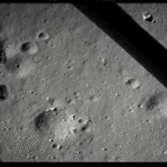
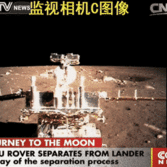
Awesome.
Also not to be missed is this high-definition version of the descent imager frames showing the full landing sequence.
[视频]降落相机动画_新闻频道_央视网(cctv.com)
Meanwhile, in the hours since Chang'e 3's successful landing, many people have worked to figure out, from the descent imagery that was shared live with the world, precisely where the spacecraft landed. It's a Sunday morning so rather than summarize all of this great work I'll simply link to some of the best.
They are some writings and observations by quality academics/professionals and other contributors.
They NOT some ridiculous cheap jokers/cheerleaders on about the quality of the camera, the accusation of the faking of the mission by having all the spacecraft, landing etc done in a studio!!!!
Color photo of Yutu rover and Chang'e lander, and more on the Chang'e 3 landing site
http://www.planetary.org/blogs/emily-lakdawalla/2013/12150754-color-photo-of-yutu-rover.html
Posted by Emily Lakdawalla
2013/12/15 09:59 CST


Awesome.
Also not to be missed is this high-definition version of the descent imager frames showing the full landing sequence.
[视频]降落相机动画_新闻频道_央视网(cctv.com)
Meanwhile, in the hours since Chang'e 3's successful landing, many people have worked to figure out, from the descent imagery that was shared live with the world, precisely where the spacecraft landed. It's a Sunday morning so rather than summarize all of this great work I'll simply link to some of the best.
- The Lunar Reconnaissance Orbiter Camera team has located the landing site in their own imagery. Safe On The Surface Of The Moon! - LROC News System. They state that the spacecraft will be above the landing site on December 24 and 25, so look for images just after Christmas.
- Chuck Wood, from LPOD, takes a lookat the geology of the landing site. http://lpod.wikispaces.com/December+15,+2013
- Some teamwork at unmannedspaceflight.com has matched some geatures seen in descent images with features seen in the side-looking images from the lander.China to the Moon - Chang'e program - Unmanned Spaceflight.com
- Here is a reallly nice analysis of the descent images. China to the Moon - Chang'e program - Unmanned Spaceflight.com showing that the lander did not rotate upon descent, and made a small horizontal shift right at the end of the sequence, presumably in order to land on a flatter spot.
- This PDF document from Yong-Chun Zheng describes the Chang'e 3 landing site. http://planetary.s3.amazonaws.com/assets/images/3-moon/20131215_Landing-site-of-Change-3.pdf
- This PDF document from Junichi Haruyama looks at the landing site as seen in Kaguya data. http://planetary.s3.amazonaws.com/assets/images/3-moon/20131215_CE3landing-site-SELENE-TC-data.pdf
Last edited:
shuttler
ELITE MEMBER

- Joined
- Feb 21, 2012
- Messages
- 9,253
- Reaction score
- 3
- Country
- Location
China Moon Landing: 'Jade Rabbit' Rover Basks in Lunar Bay of Rainbows
By Leonard David, SPACE.com's Space Insider Columnist | December 14, 2013 10:19pm ET
China Moon Landing: 'Jade Rabbit' Rover Basks in Lunar Bay of Rainbows | Space.com
China's first-ever moon rover is driving on the lunar surface after successfully separating from its carrier lander to begin exploring its landing locale: the Bay of Rainbows.
The Chang'e 3 lunar lander reached the moon Saturday (Dec. 14) at about 9:12 p.m., Beijing time, making China only the third country in the world to achieve such a moon feat after the former Soviet Union and the United States. The lander also delivered the robotic rover Yutu ("Jade Rabbit") to the lunar surface to begin its months-long driving mission.
A few hours after landing, Yutu's wheels were unlocked by the firing of explosive devices and the rover unfolded its solar wings and deployed its instrument-laden mast. A cable connecting the rover and lander was then cut. A "transferer" system — resembling a pair of ladders set up on the lander —then unlocked to inch down closer to the lunar surface, allowing the Yutu rover access to the moon's surface to begin its lunar trek.
[See photos of Chang'e 3 on the moon]
Chang'e 3 has been landed successfully on the surface of the moon today," said Zheng Yong-Chun of the National Astronomical Observatories and a member of the Chinese Academy of Sciences.
The landing site in the Sinus Iridum (Latin for "Bay of Rainbows"), a region along the northern part of the Mare Imbrium ("Sea of Showers") in the moon's northern hemisphere. "The nearest nominated crater is Laplace F," Zheng said. "May Yutu (Jade Rabbit) begin exciting new exploration."
China flexes moon landing legs
The 1-ton Chang'e 3 lander relied on auto-control for its descent to the moon and became the first spacecraft to soft-land on the lunar surface since the former Soviet Union's Luna 24 in 1976. [Most Amazing Moon Missions of All Time]
The lander hovered some 300 feet (100 meters) altitude above the lunar landscape as it scanned for a safe and sound landing point. The vehicle then throttled down its engine, free-falling to a legged landing.
The lander itself carries scientific gear capable of observing the Earth as well as other celestial objects and is designed to serve for 12 months.
Both the Chang'e 3 rover and lander still face a battle with lunar night temperatures that plummet during 14 days of lunar night. Control of China's first robotic moon landing is being carried out at the Beijing Aerospace Control Center.
Yutu rover on the moon
The Yutu moon rover is named after a pet rabbit that travels with the goddess Chang'e to the moon in Chinese legends. China has called each of its three moon missions to date after the Chang'e legend. The Chang'e 1 and Chang'e 2 orbiter missions launched in 2007 and 2010, respectively.
China's Yutu moon rover is a six-wheel robot that weighs nearly 310 lbs. (140 kilograms) and is outfitted with navigation and panoramic cameras. The lower front portion of the rover is equipped with hazard-avoidance cameras.
The solar-powered rover is built to hibernate at night and could survive three ultra-cold lunar nights, the equivalent of three Earth months.
Yutu tools on the moon
The Yutu rover carries a robotic arm with an Alpha-Proton X-ray Spectrometer, or APXS.
David Kring, senior staff scientist at the Lunar and Planetary Institute in Houston, told SPACE.com that the APXS tool could, among other duties, study recent impact crater material that's been tossed out and about, revealing the material below the moon's surface; look at ejected debris in crater rays and/or in secondary craters; and help researchers develop a better model for impact cratering processes.
According to an informal report drafted by Kring, drawing from various Chinese sources, the moon rover carries nearly 45 lbs. (20 kilograms) of gear and has a 6-mile (10 km) range once free of the Chang'e 3 lander.
Yutu also sports a belly-mounted ground penetrating radar.
The rover's radar is believed to have a piercing depth of 100 feet to nearly 330 feet (30 meters to 100 meters). It apparently can operate in two wavelengths, giving it very high resolution at shallow depths to penetrate through the moon's topside called regolith. The other radar wavelengths can probe through the regolith and into the mare basalts.
Titanium-rich site
"The landing site for Chang'e 3 is in an area of basalt flows that are rich in Titanium similar to those returned by the Apollo 11 and 17 missions," saidClive Neal, a leading lunar scientist at the University of Notre Dame's Department of Civil and Environmental Engineering and Earth Sciences.
"These are potentially younger than those returned by Apollo and investigating the compositions of the basalts in this region will add to our knowledge of the evolution of the lunar interior and history of volcanism on the lunar surface," Neal told SPACE.com.
Neal said that the data returned from the ground penetrating radar system on Yutu could allow scientists to estimate the thickness of the mare fill around the landing site, he said, and at least the depth of the lunar regolith.
"I am really looking forward to the data returned by this mission," Neal said.
Lawrence Taylor, director of the Planetary Geosciences Institute at the University of Tennessee's Department of Earth and Planetary Sciences, is a veteran Apollo lunar scientist. He, too, had high praise for China's Chang'e 3 mission.
"We Apollo lunatics salute you and your country in this marvelous event in becoming the third soft-landing nation. May your success, as initiated by your glorious 'Jade Rabbit,' be the catalyst to spur on all lunar exploration and be a bond to unite all people," Taylor said.
Visit SPACE.com for the latest news on China's space missions and the Chang'e 3 moon landing.
Leonard David has been reporting on the space industry for more than five decades. He is former director of research for the National Commission on Space and is co-author of Buzz Aldrin's new book "Mission to Mars – My Vision for Space Exploration" published by National Geographic. Follow us @SPACEdotcom, Facebook or Google+. Originally published onSPACE.com.
By Leonard David, SPACE.com's Space Insider Columnist | December 14, 2013 10:19pm ET
China Moon Landing: 'Jade Rabbit' Rover Basks in Lunar Bay of Rainbows | Space.com
China's first-ever moon rover is driving on the lunar surface after successfully separating from its carrier lander to begin exploring its landing locale: the Bay of Rainbows.
The Chang'e 3 lunar lander reached the moon Saturday (Dec. 14) at about 9:12 p.m., Beijing time, making China only the third country in the world to achieve such a moon feat after the former Soviet Union and the United States. The lander also delivered the robotic rover Yutu ("Jade Rabbit") to the lunar surface to begin its months-long driving mission.
A few hours after landing, Yutu's wheels were unlocked by the firing of explosive devices and the rover unfolded its solar wings and deployed its instrument-laden mast. A cable connecting the rover and lander was then cut. A "transferer" system — resembling a pair of ladders set up on the lander —then unlocked to inch down closer to the lunar surface, allowing the Yutu rover access to the moon's surface to begin its lunar trek.
[See photos of Chang'e 3 on the moon]
Chang'e 3 has been landed successfully on the surface of the moon today," said Zheng Yong-Chun of the National Astronomical Observatories and a member of the Chinese Academy of Sciences.
The landing site in the Sinus Iridum (Latin for "Bay of Rainbows"), a region along the northern part of the Mare Imbrium ("Sea of Showers") in the moon's northern hemisphere. "The nearest nominated crater is Laplace F," Zheng said. "May Yutu (Jade Rabbit) begin exciting new exploration."
China flexes moon landing legs
The 1-ton Chang'e 3 lander relied on auto-control for its descent to the moon and became the first spacecraft to soft-land on the lunar surface since the former Soviet Union's Luna 24 in 1976. [Most Amazing Moon Missions of All Time]
The lander hovered some 300 feet (100 meters) altitude above the lunar landscape as it scanned for a safe and sound landing point. The vehicle then throttled down its engine, free-falling to a legged landing.
The lander itself carries scientific gear capable of observing the Earth as well as other celestial objects and is designed to serve for 12 months.
Both the Chang'e 3 rover and lander still face a battle with lunar night temperatures that plummet during 14 days of lunar night. Control of China's first robotic moon landing is being carried out at the Beijing Aerospace Control Center.
Yutu rover on the moon
The Yutu moon rover is named after a pet rabbit that travels with the goddess Chang'e to the moon in Chinese legends. China has called each of its three moon missions to date after the Chang'e legend. The Chang'e 1 and Chang'e 2 orbiter missions launched in 2007 and 2010, respectively.
China's Yutu moon rover is a six-wheel robot that weighs nearly 310 lbs. (140 kilograms) and is outfitted with navigation and panoramic cameras. The lower front portion of the rover is equipped with hazard-avoidance cameras.
The solar-powered rover is built to hibernate at night and could survive three ultra-cold lunar nights, the equivalent of three Earth months.
Yutu tools on the moon
The Yutu rover carries a robotic arm with an Alpha-Proton X-ray Spectrometer, or APXS.
David Kring, senior staff scientist at the Lunar and Planetary Institute in Houston, told SPACE.com that the APXS tool could, among other duties, study recent impact crater material that's been tossed out and about, revealing the material below the moon's surface; look at ejected debris in crater rays and/or in secondary craters; and help researchers develop a better model for impact cratering processes.
According to an informal report drafted by Kring, drawing from various Chinese sources, the moon rover carries nearly 45 lbs. (20 kilograms) of gear and has a 6-mile (10 km) range once free of the Chang'e 3 lander.
Yutu also sports a belly-mounted ground penetrating radar.
The rover's radar is believed to have a piercing depth of 100 feet to nearly 330 feet (30 meters to 100 meters). It apparently can operate in two wavelengths, giving it very high resolution at shallow depths to penetrate through the moon's topside called regolith. The other radar wavelengths can probe through the regolith and into the mare basalts.
Titanium-rich site
"The landing site for Chang'e 3 is in an area of basalt flows that are rich in Titanium similar to those returned by the Apollo 11 and 17 missions," saidClive Neal, a leading lunar scientist at the University of Notre Dame's Department of Civil and Environmental Engineering and Earth Sciences.
"These are potentially younger than those returned by Apollo and investigating the compositions of the basalts in this region will add to our knowledge of the evolution of the lunar interior and history of volcanism on the lunar surface," Neal told SPACE.com.
Neal said that the data returned from the ground penetrating radar system on Yutu could allow scientists to estimate the thickness of the mare fill around the landing site, he said, and at least the depth of the lunar regolith.
"I am really looking forward to the data returned by this mission," Neal said.
Lawrence Taylor, director of the Planetary Geosciences Institute at the University of Tennessee's Department of Earth and Planetary Sciences, is a veteran Apollo lunar scientist. He, too, had high praise for China's Chang'e 3 mission.
"We Apollo lunatics salute you and your country in this marvelous event in becoming the third soft-landing nation. May your success, as initiated by your glorious 'Jade Rabbit,' be the catalyst to spur on all lunar exploration and be a bond to unite all people," Taylor said.
Visit SPACE.com for the latest news on China's space missions and the Chang'e 3 moon landing.
Leonard David has been reporting on the space industry for more than five decades. He is former director of research for the National Commission on Space and is co-author of Buzz Aldrin's new book "Mission to Mars – My Vision for Space Exploration" published by National Geographic. Follow us @SPACEdotcom, Facebook or Google+. Originally published onSPACE.com.
Last edited:
shuttler
ELITE MEMBER

- Joined
- Feb 21, 2012
- Messages
- 9,253
- Reaction score
- 3
- Country
- Location
shuttler
ELITE MEMBER

- Joined
- Feb 21, 2012
- Messages
- 9,253
- Reaction score
- 3
- Country
- Location

Credit:bbs.miercn.com
China plans to launch Chang'e 5 in 2017
(Xinhua) 10:49, December 16, 2013
China plans to launch Chang'e 5 in 2017 - People's Daily Online
BEIJING, Dec. 16 (Xinhua) -- China plans to launch lunar probe Chang'e-5 in 2017,according to the State Administration of Science, Technology and Industry for National Defense.
"The development of Chang'e-5 is proceeding smoothly," said the administration's spokesman Wu Zhijian at a press conference on Monday.
The just-concluded Chang'e-3 mission marked completion of the second phase of the country's lunar program, which includes orbiting, landing and returning to Earth.
The lunar program will enter the next stage of unmanned sampling and returning, which will include Chang'e-5 and 6 missions, according to Wu.
"The program's third phase will be more difficult because many breakthroughs must be made in key technologies such as moon surface takeoff, sampling encapsulation, rendezvous and docking in lunar orbit, and high-speed Earth reentry, which are all new to China," Wu said.
As the backup probe of Chang'e-3, Chang'e-4 will be adapted to verify technologies for Chang'e-5, according to Wu.
China's Chang'e-1 and Chang'e-2 missions were in 2007 and 2010.
Launched on Oct. 1, 2010, Chang'e-2 is about 65 million km from Earth and is China's firstman-made asteroid. It is heading for deep space.
"The completion of the third phase will not mean an end of China's lunar probe program,"Wu said. "It should be a new starting point."
Wu, however, said follow-up plans for lunar exploration after the third phase is completedare still being studied.
As for deep space exploration, Wu said, "Experts have reached some consensuses and scientists are studying and drawing up integrated plans."
Chang'e-3 lunar probe succeeded in soft landing on the moon Saturday evening. The country's first moon rover, which was on board the probe, separated from the lander early on Sunday. The two photographed each other on the moon's surface Sunday night.
Under the program, China has made breakthroughs in key technologies, which have enabled the lunar probe to land on the moon and deploy a moon rover, Wu said.
"We have also laid a solid foundation for future exploration of deep space," he said.
In response to questions about working with other countries in this field, Wu said China is always positive about international cooperation in lunar exploration.
"We have had very good cooperation with other countries and international organizations in previous missions," he said.
Data collected through the Chang'e-1 and Chang'e-2 probes are open to scientists across the world, according to Wu.
China shared information collected by Chang'e-1 with the European Space Agency (ESA),and an ESA aerospace control center and three of its telecommand telemetry control stations took part in the Chang'e-3 mission, he said.
"In the next stage of the lunar program, there will be more international cooperation," hesaid.
"Despite current progress, China still lags behind space giants like the United States and Russia in many aspects," he said. "We need to work harder and move faster."
(Editor:ZhangQian、Huang Jin)
Last edited:
shuttler
ELITE MEMBER

- Joined
- Feb 21, 2012
- Messages
- 9,253
- Reaction score
- 3
- Country
- Location
Chang'e 3 Lander's six minutes of brilliance:
“嫦娥三号”6分钟落月视频首次发布—在线播放—优酷网,视频高清在线观看
Also Illustrations showing various positions and movements of Yutu when the photos (post #460) were taken between them (Chang'e 3 Lander):


Credit: ifeng.com
“嫦娥三号”6分钟落月视频首次发布—在线播放—优酷网,视频高清在线观看
Also Illustrations showing various positions and movements of Yutu when the photos (post #460) were taken between them (Chang'e 3 Lander):


Credit: ifeng.com
Last edited:
shuttler
ELITE MEMBER

- Joined
- Feb 21, 2012
- Messages
- 9,253
- Reaction score
- 3
- Country
- Location
View attachment 11909 What is in red box
and do you think it was a footprint? come-on, he must be wearing a big shoe!
lcloo
SENIOR MEMBER

- Joined
- Jul 28, 2010
- Messages
- 3,981
- Reaction score
- 14
- Country
- Location
That is the light reflected from the solar panel. If you watch the video or the GIF animated photo, you will notice the reflection moved in tandem with the rover.View attachment 11909 What is in red box
On second thought may reflection from the body of the rover.
shuttler
ELITE MEMBER

- Joined
- Feb 21, 2012
- Messages
- 9,253
- Reaction score
- 3
- Country
- Location
美宇航局出动4艘飞船围观嫦娥3号登月
2013年12月17日 07:27 新浪科技
NASA has sent four spy/surveying satellites observing Chang'e 3 landing/activities on the Moon
At 7:27 on December 17, 2013 Sina Technology
News link: 美宇航局出动4艘飞船围观嫦娥3号登月|月球|嫦娥|探测器_科学探索_新浪科技_新浪网
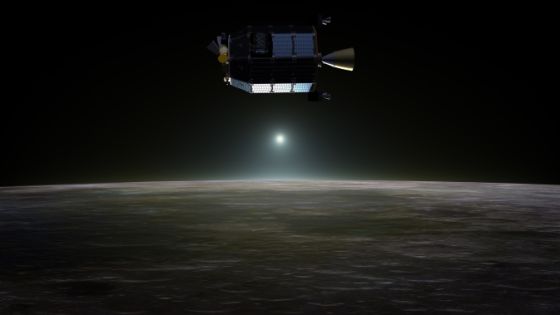
LADEE

LRO
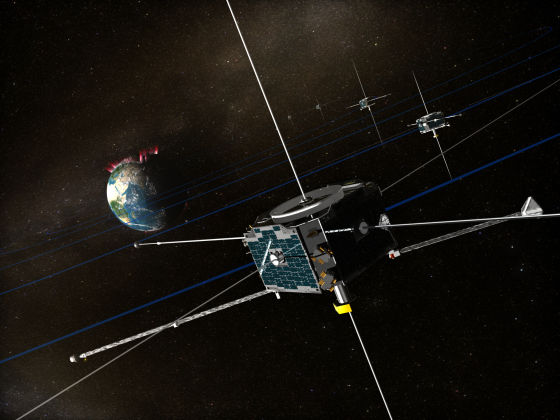
2 ARTEMIS
2013年12月17日 07:27 新浪科技
NASA has sent four spy/surveying satellites observing Chang'e 3 landing/activities on the Moon
At 7:27 on December 17, 2013 Sina Technology
News link: 美宇航局出动4艘飞船围观嫦娥3号登月|月球|嫦娥|探测器_科学探索_新浪科技_新浪网

LADEE

LRO

2 ARTEMIS
shuttler
ELITE MEMBER

- Joined
- Feb 21, 2012
- Messages
- 9,253
- Reaction score
- 3
- Country
- Location
China plans to launch Chang'e 5 in 2017
Xinhua | 2013-12-16 10:42:39
By Agencies
China plans to launch Chang'e 5 in 2017 - SCI_TECH - Globaltimes.cn
China plans to launch lunar probe Chang'e 5 in 2017, according to the State Administration of Science, Technology and Industry for National Defense.
The development of Chang'e 5 is proceeding smoothly, said the administration's spokesman Wu Zhijian at a press conference on Monday.
The just-concluded Chang'e 3 mission marked completion of the second phase of the country's lunar program, which includes orbiting, landing and returning to Earth.
The lunar program will enter the next stage of unmanned sampling and returning, which will include Chang'e 5 and 6 missions, according to Wu.
中国具备探测火星能力 探月投入不算多
2013年12月18日 11:20 新华网
China has the ability for Mars Exploration
Money spent in China's Lunar mission is not a big one
At 11:20 on December 18, 2013 Xinhua
中国具备探测火星能力 探月投入不算多|嫦娥三号|中国|探月_科学探索_新浪科技_新浪网
Also:
Beijing 'ready' to launch Mars mission
Global Times | 2013-12-19 1:18:01
By Fang Yang
Beijing 'ready' to launch Mars mission - CHINA - Globaltimes.cn
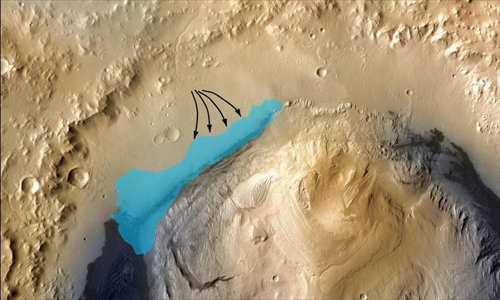
Photo: Xinhua
China is likely to expand its horizon in space travel by possible Mars exploration, expert said.
After the unmanned Chang'e-3 successfully completed its soft-landing on the moon, people from both home and abroad have been wondering whether China will send probes to Mars, which has become a key goal for many foreign space organizations.
According to the chief designer of China's lunar probe program, Wu Weiren, China is ready.
"We have the potential to go there in the wake of the successes of the Chang'e-1 and Chang'e-2 missions," Wu said at a news conference held in Beijing on Tuesday, adding that the final decision is up to the government, Xinhua News Agency reported.
"We follow our own approach that respects stable progress and dislikes rash and reckless moves," he said. "We don't want to compete with any country in this regard."
Wu added that the Long March-5 rocket series with the maximum thrust of 1,100 tons can ensure the sending of a Martian probe.
"In terms of the carrying capacity of the rocket and the tracking and control system, China is capable of sending Martian probes," Pang Zhihao, a research fellow with the Chinese Academy of Space Technology, told the Global Times on Wednesday.
Pang said that the two deep space monitoring stations in China have shown their ability tracking Chang'e 2, which is about 64 million kilometers from Earth.
"But China still needs to build deep space monitoring stations abroad to make up for blind measurements to track deep space detectors round the clock," Pang said.
Furthermore, as scientists around the world have been exploring the possibility of living on the moon, the research on bioregenerative life support systems, which hold much promise for planetary bases, has been conducted in China.
The Beijing University of Aeronautics and Astronautics has recently been praised for its work on closed ecological systems suitable for growing plants in outer space, according to the university's website.
Wu also noted that compared with the US spending 2 to 2.5 percent of GDP on its lunar exploration program at that time, China's input - only a few ten-thousands of the country's GDP - is not very much.
Besides, only about 40 percent of the 118 lunar probe attempts by the US and the Soviet Union during the space race in the 1960s and 1970s had been successful, while China's Chang'e-1 to Chang'e-3 missions have all succeeded, he said.
Although China has not officially announced any intention to fly a human mission to the moon, the door is now open and - if they have the will - nothing will stand in their way, said James Longuskian, associate fellow of the American Institute of Aeronautics and Astronautics .
Xinhua | 2013-12-16 10:42:39
By Agencies
China plans to launch Chang'e 5 in 2017 - SCI_TECH - Globaltimes.cn
China plans to launch lunar probe Chang'e 5 in 2017, according to the State Administration of Science, Technology and Industry for National Defense.
The development of Chang'e 5 is proceeding smoothly, said the administration's spokesman Wu Zhijian at a press conference on Monday.
The just-concluded Chang'e 3 mission marked completion of the second phase of the country's lunar program, which includes orbiting, landing and returning to Earth.
The lunar program will enter the next stage of unmanned sampling and returning, which will include Chang'e 5 and 6 missions, according to Wu.
中国具备探测火星能力 探月投入不算多
2013年12月18日 11:20 新华网
China has the ability for Mars Exploration
Money spent in China's Lunar mission is not a big one
At 11:20 on December 18, 2013 Xinhua
中国具备探测火星能力 探月投入不算多|嫦娥三号|中国|探月_科学探索_新浪科技_新浪网
Also:
Beijing 'ready' to launch Mars mission
Global Times | 2013-12-19 1:18:01
By Fang Yang
Beijing 'ready' to launch Mars mission - CHINA - Globaltimes.cn

Photo: Xinhua
China is likely to expand its horizon in space travel by possible Mars exploration, expert said.
After the unmanned Chang'e-3 successfully completed its soft-landing on the moon, people from both home and abroad have been wondering whether China will send probes to Mars, which has become a key goal for many foreign space organizations.
According to the chief designer of China's lunar probe program, Wu Weiren, China is ready.
"We have the potential to go there in the wake of the successes of the Chang'e-1 and Chang'e-2 missions," Wu said at a news conference held in Beijing on Tuesday, adding that the final decision is up to the government, Xinhua News Agency reported.
"We follow our own approach that respects stable progress and dislikes rash and reckless moves," he said. "We don't want to compete with any country in this regard."
Wu added that the Long March-5 rocket series with the maximum thrust of 1,100 tons can ensure the sending of a Martian probe.
"In terms of the carrying capacity of the rocket and the tracking and control system, China is capable of sending Martian probes," Pang Zhihao, a research fellow with the Chinese Academy of Space Technology, told the Global Times on Wednesday.
Pang said that the two deep space monitoring stations in China have shown their ability tracking Chang'e 2, which is about 64 million kilometers from Earth.
"But China still needs to build deep space monitoring stations abroad to make up for blind measurements to track deep space detectors round the clock," Pang said.
Furthermore, as scientists around the world have been exploring the possibility of living on the moon, the research on bioregenerative life support systems, which hold much promise for planetary bases, has been conducted in China.
The Beijing University of Aeronautics and Astronautics has recently been praised for its work on closed ecological systems suitable for growing plants in outer space, according to the university's website.
Wu also noted that compared with the US spending 2 to 2.5 percent of GDP on its lunar exploration program at that time, China's input - only a few ten-thousands of the country's GDP - is not very much.
Besides, only about 40 percent of the 118 lunar probe attempts by the US and the Soviet Union during the space race in the 1960s and 1970s had been successful, while China's Chang'e-1 to Chang'e-3 missions have all succeeded, he said.
Although China has not officially announced any intention to fly a human mission to the moon, the door is now open and - if they have the will - nothing will stand in their way, said James Longuskian, associate fellow of the American Institute of Aeronautics and Astronautics .
Last edited:
shuttler
ELITE MEMBER

- Joined
- Feb 21, 2012
- Messages
- 9,253
- Reaction score
- 3
- Country
- Location
Vid and pix inside the "earth" module of China's Yuegong 1 (Moon Palace 1) and the current Chang'e mission:
Video link:
月宫一号 -频道:嫦娥三号登月全程-在线观看-PPS爱频道

credit: 4hw.com.cn




An artist's impression of a Moon base
credits: fj.xinhuanet.com/guancha net
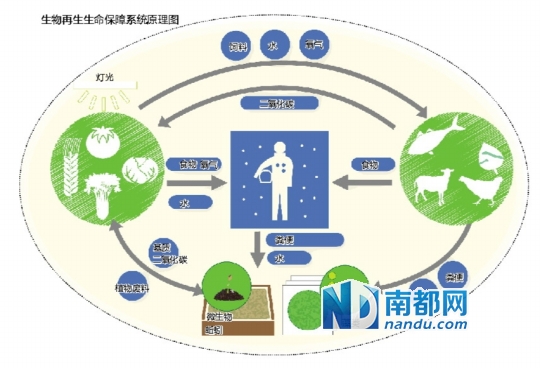
A illustrated concept of the ecosystem and food regeneration and preservation cycle
credit: ifeng

2013-12-18 17时04分20秒,北京航天城内,随着一声“开舱”的口令,中国航天员中心唐永康、米涛结束为期30天的封闭试验,顺利走出我国首次受控生态生保系统试验平台密封舱。与其他密封舱需要外部供氧不同,这个舱体内的氧气完全由其搭载的4种蔬菜产生。专家表示,试验成功标志着我国载人深空探测和建立月球基地的基础保障技术已经攻克。
December 18, 2013 7:04:20, Beijing Aerospace City:
With a loud calling "open the cabin", Taikongnauts Tang Yongkang and Mi Tao of Chinese Astronaut Center finish their 30-day trial living inside of China's first controlled ecological life support system in a air-tight capsule.
Different from other enclosed space capsule which requires external oxygen supply, the Chinese capsule obtains oxygen supply entirely from four kinds of vegetables growing inside of the cabin.
Experts said the successful trial indicates that it is a successful step forward of acquiring the technologies for the next manned deep space exploration and the establishment of a lunar base
credit:xilu.com
net assisted translation
Video link:
月宫一号 -频道:嫦娥三号登月全程-在线观看-PPS爱频道

credit: 4hw.com.cn




An artist's impression of a Moon base
credits: fj.xinhuanet.com/guancha net

A illustrated concept of the ecosystem and food regeneration and preservation cycle
credit: ifeng

2013-12-18 17时04分20秒,北京航天城内,随着一声“开舱”的口令,中国航天员中心唐永康、米涛结束为期30天的封闭试验,顺利走出我国首次受控生态生保系统试验平台密封舱。与其他密封舱需要外部供氧不同,这个舱体内的氧气完全由其搭载的4种蔬菜产生。专家表示,试验成功标志着我国载人深空探测和建立月球基地的基础保障技术已经攻克。
December 18, 2013 7:04:20, Beijing Aerospace City:
With a loud calling "open the cabin", Taikongnauts Tang Yongkang and Mi Tao of Chinese Astronaut Center finish their 30-day trial living inside of China's first controlled ecological life support system in a air-tight capsule.
Different from other enclosed space capsule which requires external oxygen supply, the Chinese capsule obtains oxygen supply entirely from four kinds of vegetables growing inside of the cabin.
Experts said the successful trial indicates that it is a successful step forward of acquiring the technologies for the next manned deep space exploration and the establishment of a lunar base
credit:xilu.com
net assisted translation
Last edited:
Similar threads
- Replies
- 30
- Views
- 658
- Replies
- 8
- Views
- 294
- Replies
- 0
- Views
- 154
- Replies
- 3
- Views
- 439


